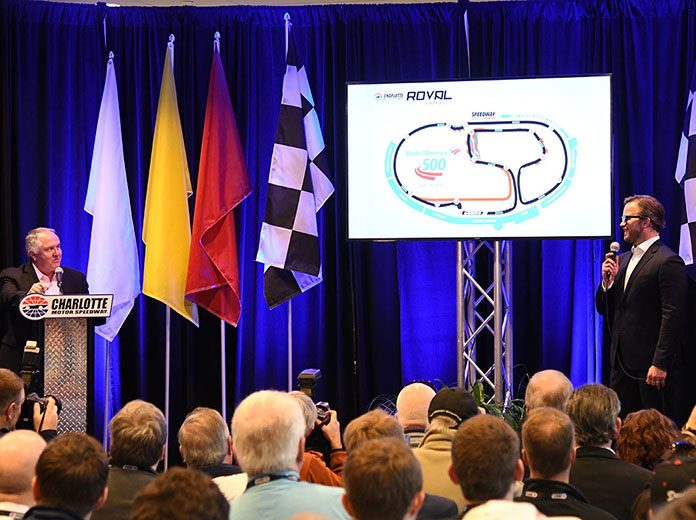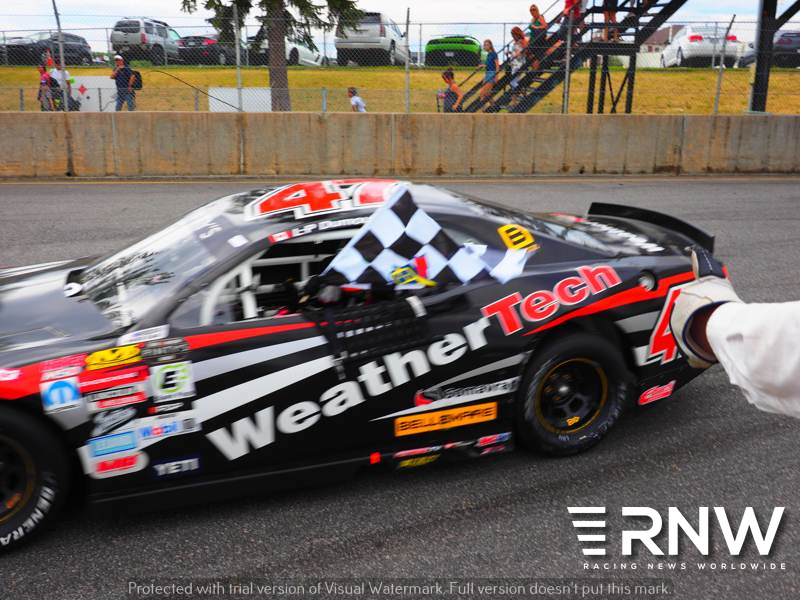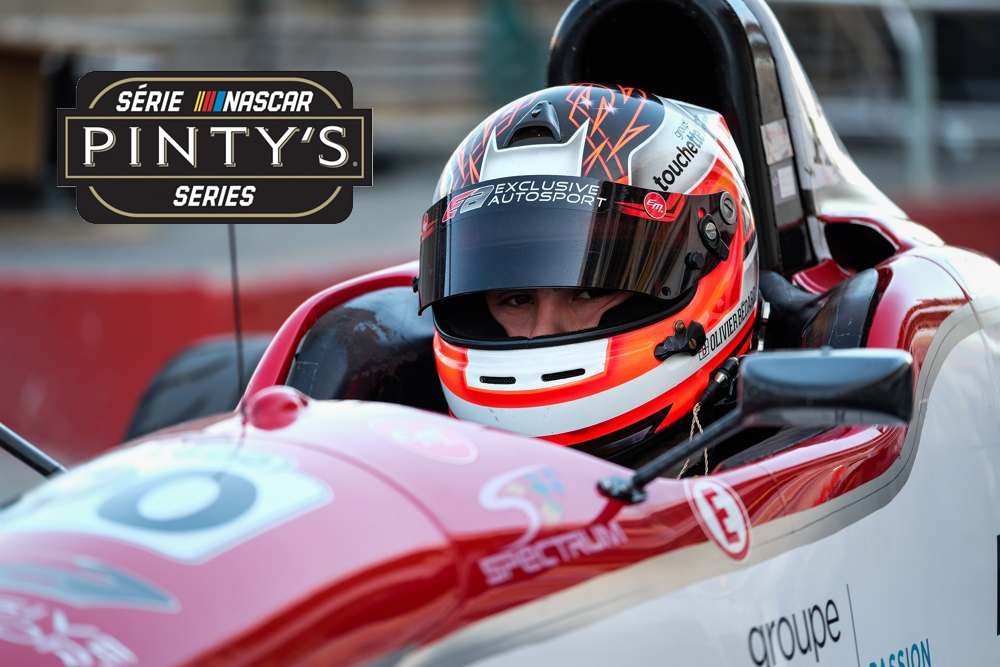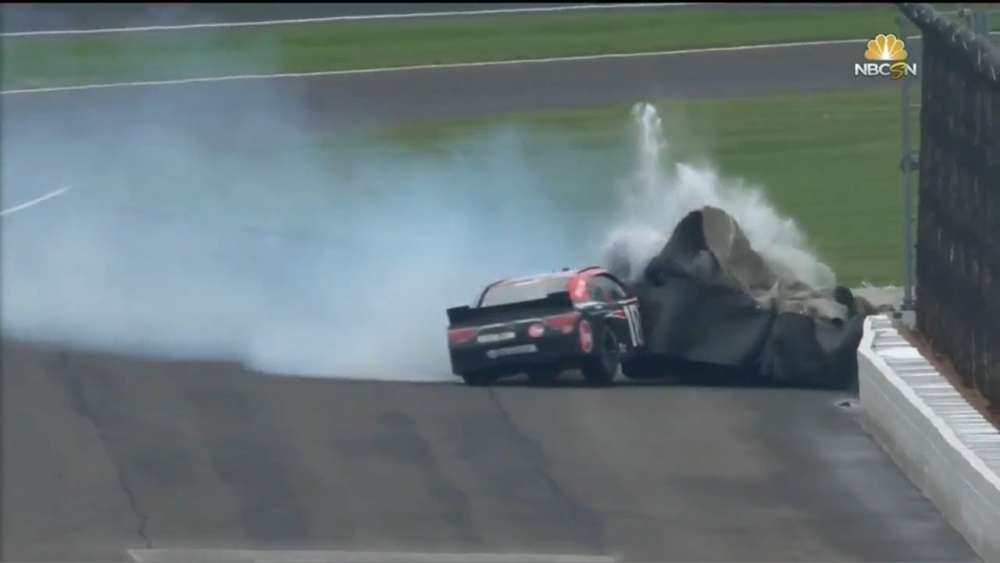
After consulting with industry officials and competitors — including Max Papis and Alexander Wurz — Charlotte Motor Speedway has chosen to remove two of the final three infield turns before drivers return to the oval portion of the track.
Track officials believe the removal of those turns will lead to a lap time increase of between 15 and 20 seconds on average for competitors as they make their way around the 17-turn track.
“We’ve made some tweaks and a few adjustments here and there,” said Speedway Motorsports Inc. President and COO and Charlotte Motor Speedway General Manager Marcus Smith. “We took out the lower loop area and we think that is going to save 15 to 20 seconds a lap.
“It’s going to create a little bit higher speed and racing in the infield. We’re still going to have 2.28 miles and over 30 feet of elevation change. We’re still going to have quite a bit of camber in in the turns in the infield, which is very unique for an infield road course.”
The removal of the extra turns in the infield came after a Goodyear tire test in October that featured Martin Truex Jr., Kurt Busch, Jamie McMurray and Daniel Hemric making laps on what was then a 2.42-mile course.
 The current Charlotte Motor Speedway Roval design.
The current Charlotte Motor Speedway Roval design.
“We decided after going through testing and just taking the numbers and doing some analysis that we wanted to try it out,” Smith explained. “We did some of our own internal testing on that and felt like it was a good move.
“I feel like we’re 99 percent there,” Smith added on finalizing the course for the Bank of America 500 on Sept. 30. “We’ve added two chicanes, we’ve taken out the lower loop turns that were a little bit slower. We feel like where we are now is pretty much the way it will be raced.”
Papis, a veteran road racer with experience racing in the Rolex 24, the 24 Hours of Le Mans and on the streets of Monaco, Monte Carlo, was contacted by Smith about a year and a half ago and asked to consult on the Roval.
“A road course in the playoffs is huge just in itself, plus doing a road course where no matter you stand in the grandstand you’re going to be able to watch every corner. That is amazing,” Papis said. “Marcus called me about a year and a half ago asking what do I think about the idea. Obviously, I’ve had some time to think about it and I think that this was a very exciting opportunity to a part of America where you’re more used to oval (racing), but people are really excited about racing in itself.”
It was Papis who contacted Wurz, a retired Formula One racer who has been involved in designing several race tracks around the world. The two of them offered guidance to track officials as they designed the Roval.
“The challenge was mainly creating a proper road course in confined spaces. I reached out to my friend Alex Wurz, who obviously has no need for presentation (introduction). He has been designing a lot of race tracks,” Papis said. “We’ve been really working hard to make sure we open up opportunities for passing. Road racing is fun, but it’s not fun if the track is not challenging.
“So we created a couple of very heavy-braking situations,” Papis continued. “If you look at the track itself, the track is not a regular straight line braking zone track. You have an opening towards the inside of the curb, so that will mean you will have different lines to choose. If you defend your exit is not going to be very fast. If you make a proper line your exit is going to be fast but you’re going to leave the door open for someone to pass.”
In addition, track officials announced Tuesday during the opening day of the annual NASCAR Media Tour they would be adding removable curbing and rumble strips to sections of the road course. Papis believes the addition of the curbs and rumble strips will open up opportunities for other road racing series to compete at Charlotte Motor Speedway.
“It will allow the opportunity to race a lot of different vehicles on the same track. The goal was mainly containing 3,600 pound cars on the weekend and not having too much dirt and not creating too many unnecessary yellows (cautions). I felt that we’ve done a really good job creating good challenges, but also making sure the track is really drivable.”
With the road course events at Sonoma (Calif.) Raceway and Watkins Glen (N.Y.) Int’l becoming known for high drama, Smith believes fans will get more of the same on Sept. 30 at Charlotte Motor Speedway.
“I have a lot of confidence that we’re going to have one really, really excited person at the end of the Bank of America 500 and we’re going to have a lot of others who aren’t very happy at all,” Smith said. “That’s part of the deal. Victory lane is going to be a fun place and pit road may be in need of extra security. We’ll see.”
Source :speedsport.com






















